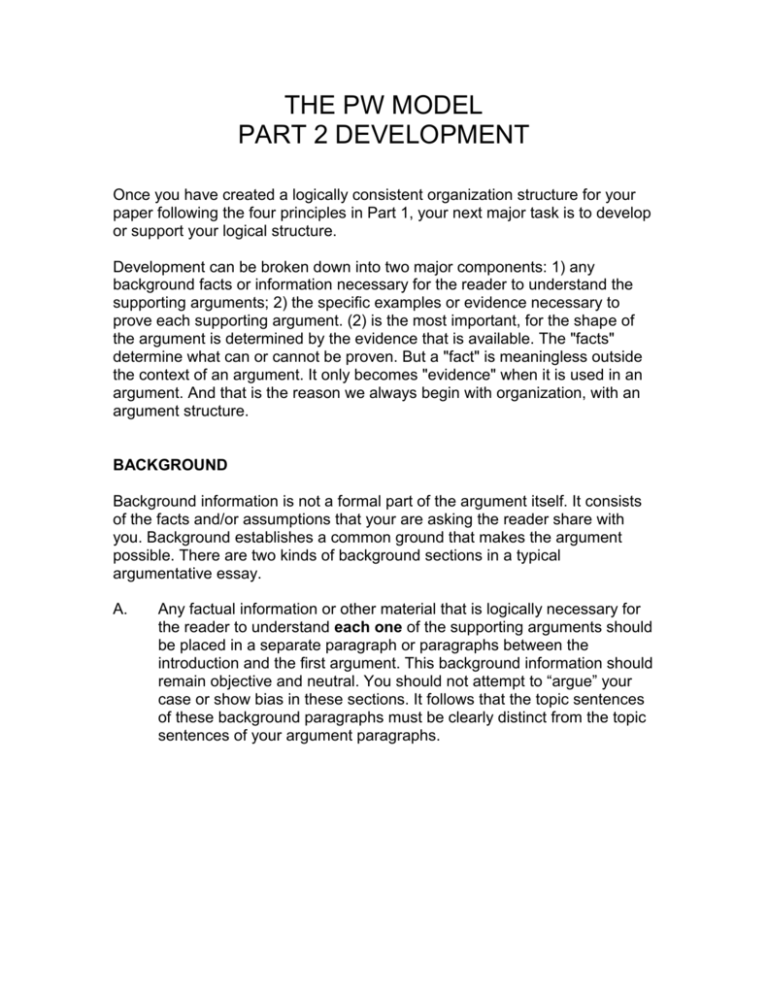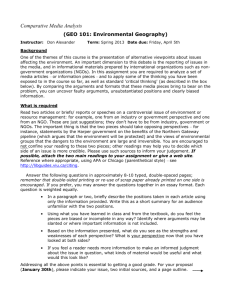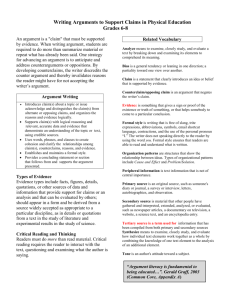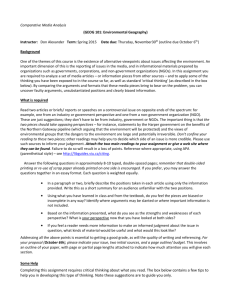doc
advertisement

THE PW MODEL PART 2 DEVELOPMENT Once you have created a logically consistent organization structure for your paper following the four principles in Part 1, your next major task is to develop or support your logical structure. Development can be broken down into two major components: 1) any background facts or information necessary for the reader to understand the supporting arguments; 2) the specific examples or evidence necessary to prove each supporting argument. (2) is the most important, for the shape of the argument is determined by the evidence that is available. The "facts" determine what can or cannot be proven. But a "fact" is meaningless outside the context of an argument. It only becomes "evidence" when it is used in an argument. And that is the reason we always begin with organization, with an argument structure. BACKGROUND Background information is not a formal part of the argument itself. It consists of the facts and/or assumptions that your are asking the reader share with you. Background establishes a common ground that makes the argument possible. There are two kinds of background sections in a typical argumentative essay. A. Any factual information or other material that is logically necessary for the reader to understand each one of the supporting arguments should be placed in a separate paragraph or paragraphs between the introduction and the first argument. This background information should remain objective and neutral. You should not attempt to “argue” your case or show bias in these sections. It follows that the topic sentences of these background paragraphs must be clearly distinct from the topic sentences of your argument paragraphs. B. Any factual information or other material that is necessary for the reader to understand an individual supporting argument should be placed at the beginning of the argument in question. Although it may be difficult, this background information should also be presented in a neutral and objective manner. EVIDENCE Evidence consists of the specific examples and other facts that you will use to prove or match with your supporting arguments as they are stated in the topic sentences of your argument paragraphs. The examples you use to support your individual arguments should be neither too general nor too specific. This is a large part of what is meant by “matching.” The examples must match your arguments just as your arguments should match your thesis statement. (This point will be explained at length in our CT model.) What counts as “good evidence” is usually dependent upon what your audience or reader will accept. In "real life," there is no one single criterion for good evidence. The main purpose of evidence is to persuade someone who is not you to accept specific ideas and beliefs that you hold (your supporting arguments and thesis statement), even when they may not want to. (See our CT model for a further discussion of evidence.) Here are several rules of thumb you might consider. A. In general, you should have at least two separate examples for each argument. One example is never sufficient to prove a point. B. The examples must be such that if the reader accepts your examples then he or she should accept your argument. In other words, they must match your arguments. C. The best examples are objective facts that can be independently verified by your reader. The least effective are personal opinions and judgments that you and only you can account for. D. However, personal experiences can often be considered to be "good" evidence if they are described in sufficient detail, if they clearly match the arguments they are intended to support and if they not presented in a narrow or biased fashion. However, the audience and context will usually determine what kinds of personal experiences are appropriate. E. In presenting your examples, you must explain how they support or otherwise relate to your arguments. You cannot simply list them and assume that the reader will see the connections that you intend. This is a critical point. F. Stating what you believe to be true is not the same as presenting "factual" evidence. In other words, it is absolutely essential for you to distinguish between a fact and an opinion. Just because you believe something is true does not make it true for your reader. You must baseyour arguments on what your reader will accept as "fact." It is for this reason that outside sources and acknowledged authorities are often used as evidence in effective arguments.









